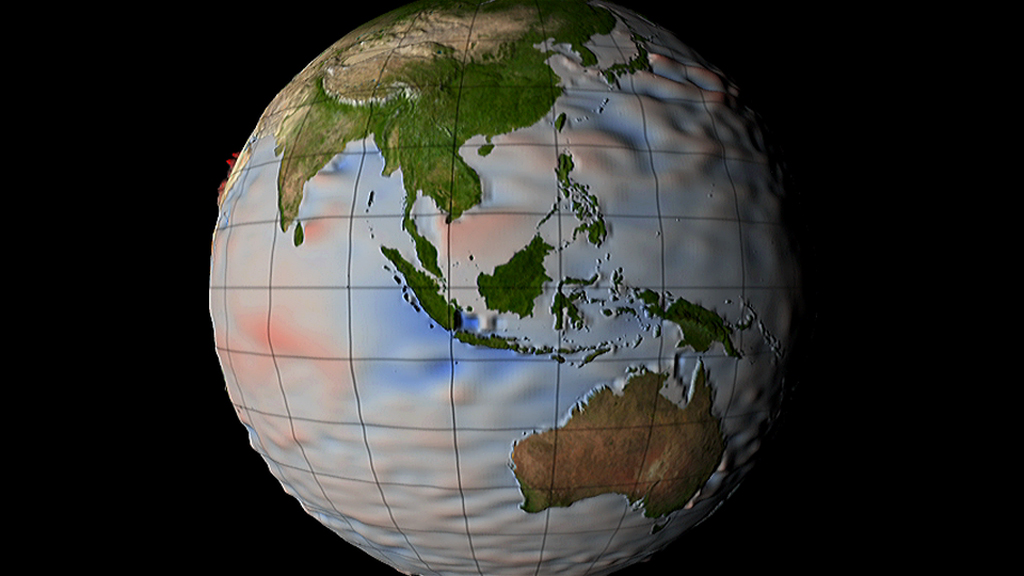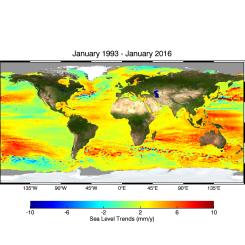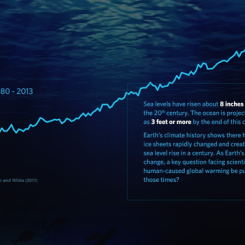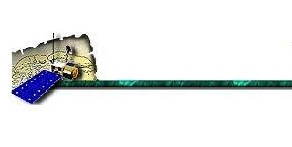Mini Lesson/Activity
Stability and Change: Monitoring Sea Level
Overview
Students analyze the stability and change of sea level after watching a visualization of sea level height around the world.
Student Directions
Scientists are studying the rise of the oceans, but are they "level" to begin with?

Sea level: The phrase itself suggests our ocean and seas have a uniform height. But in fact, the surface of Earth's ocean is not level at all. The average height of the ocean surface varies by several feet across the globe.
Watch the video animation Monitoring Sea Level and answer the following questions. In this visualization, ocean surface height is indicated by color:
- Average surface height is shown in white
- Surface height that is 20 inches above average is shown in dark red
- Surface height that is 20 inches below average is shown in dark blue
Steps:
- Check with your instructor on how to submit your answers.
- Create a mental model to estimate the height measurements used in this video. Twenty inches is roughly equal to what common object?
- What locations have sea surface heights that are higher than average?
- What locations have sea surface heights that are lower than average?
- Identify oceans that have both ends of the extremes. What might cause this?
- What processes cause changes in sea height?
- As you review this video, what questions come to mind?
The Earth's system exemplifies stability and change. Change and rates of change can be observed and quantified over very short or long periods of time and various spatial scales (e.g., from landscape level to global processes). Understanding stability and change in Earth processes contributes to a more complete understanding of the Earth system.
Source:
- Monitoring Sea Level. (2018, June 20). YouTube. Retrieved October 26, 2022, from https://www.youtube.com/watch?v=NegtxrwUkmo
Teacher Note
Teachers, these mini lessons/student activities are perfect "warm up" tasks that can be used as a hook, bell ringer, exit slip, etc. They take less than a class period to complete. Learn more on the "My NASA Data What are Mini Lessons?" page.
Teachers who are interested in receiving the answer key, please complete the Teacher Key Request and Verification Form. We verify that requestors are teachers prior to sending access to the answer keys as we’ve had many students try to pass as teachers to gain access.
Disciplinary Core Ideas:
Crosscutting Concepts:
- Scale, Proportion, and Quantity
- Stability and Change
Science and Engineering Practices:
- Developing and Using Models
- Analyzing and Interpreting Data






